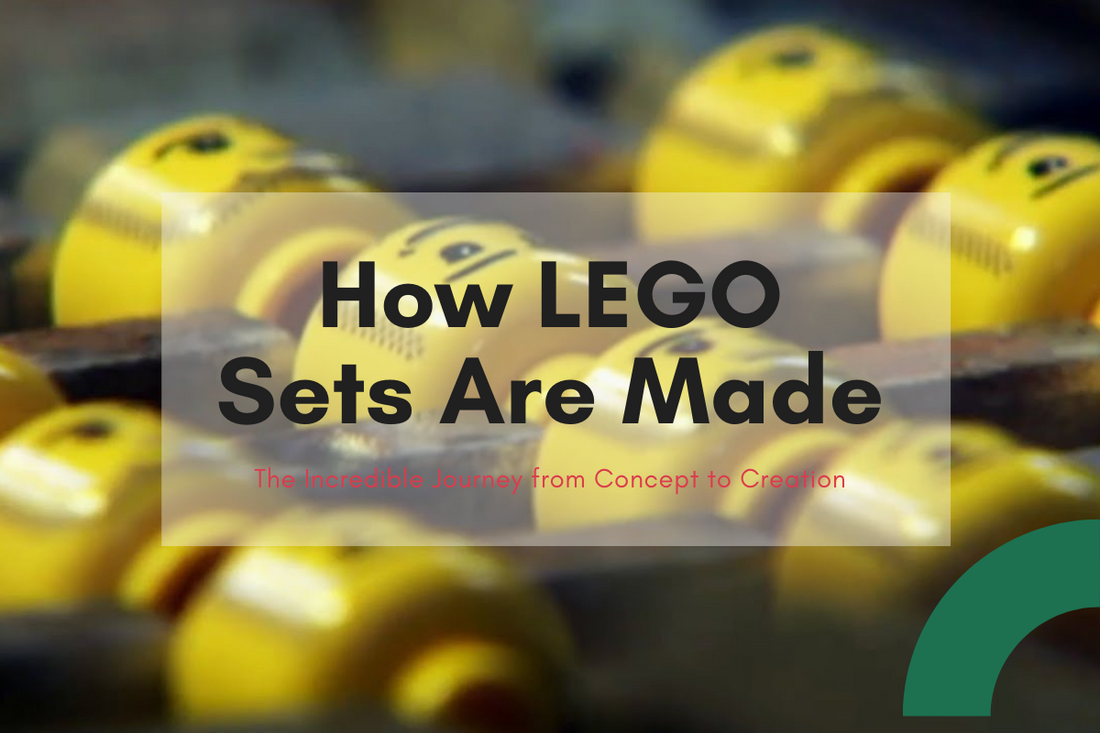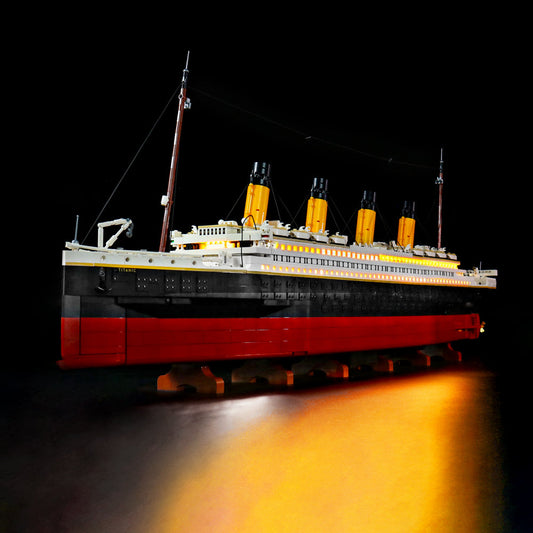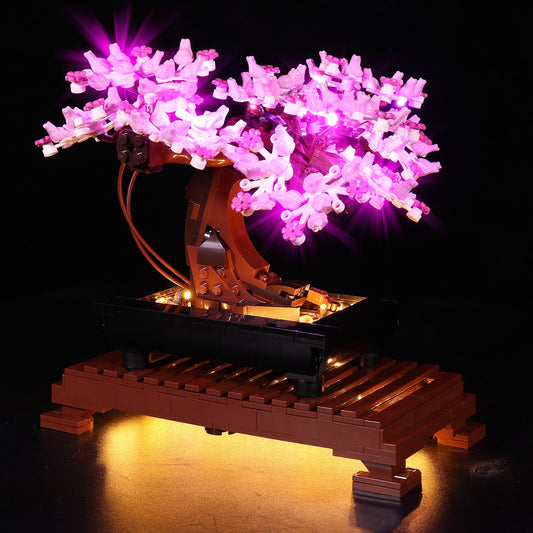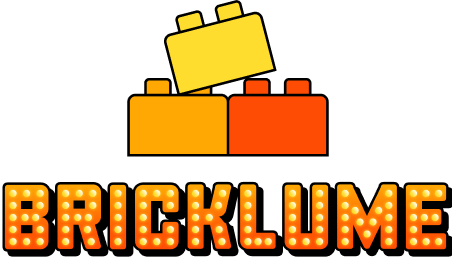
How LEGO Sets Are Made: The Incredible Journey from Concept to Creation
Share
How LEGO® Sets Are Made: From Idea to Toy Store Shelf
Have you ever wondered how your favorite LEGO® sets come to life? It's a journey that begins with an idea and ends with a box full of colorful bricks ready for you to build. Let's take a look at the fascinating process of how LEGO® sets are made, from the initial concept to the finished product you see on store shelves.
The Birth of an Idea: LEGO's Innovation House
The magic starts at LEGO's Innovation House in Billund, Denmark. This is where teams of designers brainstorm and develop new LEGO® sets. Each team, typically consisting of 4 to 12 designers, focuses on one of LEGO's 42 unique themes.

These teams work together, bouncing ideas off each other. The collaborative atmosphere is key to the creative process. Imagine being surrounded by fellow LEGO® enthusiasts, all working to create the next big thing!
Brainstorming and Inspiration
The process of brainstorming ideas, colors, and designs can take months. Where do these ideas come from? Inspiration can strike from anywhere. For example, the LEGO® Hidden Side theme drew inspiration from New Orleans.

Designers visited New Orleans to gather ideas. The city's Southern architecture and harbor made their way into the theme's shipwrecks and Ghost Town sets. It's amazing how real-world locations can inspire LEGO® creations!
Project Timelines and Freedom
LEGO® operates on a semester-based project system. Most new sets are released in January and during the summer. Design teams usually work one to two years ahead.

LEGO® designers are given a list with the approximate number of sets to design for each launch, as well as a desired range of price points. Other than that, they have a lot of freedom to come up with whatever they feel best captures the theme. This balance between structure and freedom allows for amazing creativity.
Designing the Dream: Sculpting with Bricks
Within the Innovation House, each team has its own workspace. Designers working on the same theme sit together. Each team also has a large building table filled with commonly used bricks. This setup encourages collaboration and allows designers to easily give and receive feedback. It also helps ensure that all the sets within a theme have a unified look and feel.
From Sketch to Physical Model
When a designer knows which set they'll be working on, it's time to hit the drawing board. Most designers start with a rough sketch of what the finished product should look like. From there, it's time to begin the initial construction.
The first phase of physical design is usually very simple. A boat might be represented with just a base plate and a few bricks. This helps to get an overall sense of scale and shape for the set.
Why Physical Design Matters
LEGO® designers often describe the creative process as "sculpting with bricks." The majority of the design stage is done physically with real LEGO® bricks.
While there is computer software with every kind of brick available, it doesn't simulate gravity or how kids hold the model. Playing with real bricks is more fun! It also lets designers test the model's stability and playability.
The LEGO® Brick Library
Inside the LEGO® Innovation House, designers have access to a literal library with every single LEGO® brick the company makes. This room is massive and even has handy reference charts at the end of each aisle. Designers visit this library multiple times a day to fill up boxes with bricks to use in their models.
The Designer's Daily Life
An average workday for a LEGO® designer has been described as "like a kid playing at home." During the design phase, models are often reworked several times until they're just right. Did you know that LEGO® prototypes can change quite a bit during the design process? You can see how much these designs can change over the process in this video about LEGO® prototypes.
Saving Work and Sneaking in Secrets
When a designer is happy with the model's look and feel, they upload it to the computer to save their work. This is important in case the model breaks. Designers sometimes sneak in personal references and hidden jokes. For example, in LEGO® Hidden Side's Wrecked Shrimp Boat set, the designer named the ship "Maria," which is his wife's first name, and the ship's plate number is their wedding anniversary. How cool is that?
Play-Proofing and Approval: Testing and Refinement
Once the design is finalized, it's time for testing. LEGO® sets need to be "play-proofed" to make sure they meet the company's high standards.
Rigorous Testing

Throughout the design process, local kids are invited to the studio to test the products and offer suggestions. This feedback is invaluable in making sure the sets are fun and engaging for their target audience.
Licensing Approvals

If a set is licensed, it also needs to be checked by the intellectual property owner, such as Disney. This ensures that the sets accurately represent the franchise or movie they are based on.
Design Boost

LEGO® hosts an event every spring called "Design Boost." During this week, designers can use all the company's resources to pitch their own ideas. These weeks can be incredibly productive. In fact, the original idea for the LEGO® BrickHeadz line came from one of these events!
From Granules to Bricks: The Manufacturing Process
How are LEGO® bricks themselves made? The manufacturing process is incredibly sophisticated. Every single LEGO® brick starts with tiny plastic granules made of ABS plastic.
The Starting Point: ABS Plastic Granules

Every day, trucks filled with these plastic pellets arrive at LEGO® factories. These granules only come in blue, green, red, yellow, black, gray, and white. Any other color you see in LEGO's palette is made from a mixture of two or more of these base colors.
The Journey Through the Factory
Giant hoses suck up the granules and dump them into three-story-high metal silos. At the main LEGO® factory, there are 14 silos that can hold up to 33 tons of raw plastic pellets. From these silos, the granules are fed down pipes into the molding machines.
The Molding Machines

Inside the molding machines, the granules are heated to temperatures of nearly 450 degrees Fahrenheit (230°C). This results in a thick plastic goo. This melted goo is then fed into injection molds. These are small metal containers in the shape of completely hollow LEGO® bricks.
Think of it like using an ice cube tray. The molding machine puts up to 150 tons of pressure on the mold. This guarantees that the bricks are shaped with perfect accuracy. Then they are cooled and ejected, which only takes about 10 seconds.
Precision and Automation
The LEGO® molding process is so precise that out of every 1 million bricks produced, only 18 are rejected. The molding process is almost entirely automated due to the dangers of heat and pressure. Finished elements roll along conveyor belts into boxes.
Robotic Delivery System

When a box is full, the machine alerts a nearby robot that it's time for a delivery. Guided by grooves on the factory floor, these robots pick up full boxes of LEGO® bricks. They then place them onto another conveyor belt that takes them to the next step of the manufacturing process. These things are constantly on the move. In the building, robotic trucks transport more than 600 boxes of elements every hour.
Production Volume
The LEGO® factory in Billund produces more than 36,000 elements every single minute. That's a lot of bricks!
Autonomous Storage
These bricks are then moved to one of four different storage areas in the factory. These areas are completely autonomous, and no humans are inside at all. From here, the bricks are removed as needed for further assembly.
Adding the Details: Decoration and Assembly
At this stage, the bricks are technically ready to be used. However, there's still one crucial step left before packaging: decorating.
From Plain Bricks to Detailed Elements
The next stop for these bricks is the assembly halls. Here, details like faces, control panels, numbers, words, or anything else printed on the pieces are added.
Minifigure Assembly
Pieces like minifigure torsos are snapped together. This ensures that when you open the set, the minifigure torso already has its arms and hands attached.
Ready to Ship
At this point, the bricks are all ready to be shipped out. They just need to be sorted and packaged.
Sorting and Packaging: The Final Touches
LEGO® sets often have hundreds or even thousands of pieces. This step needs to be fast and accurate.
The Packaging Line
In the packaging lines, pieces are sorted by dumping them into a machine. This then separates and counts them using optical sensors. The correct number of pieces are placed in a generic small box, also known as a cassette. These cassettes roll down conveyor belts under the bins holding all the LEGO® bricks. The bins open and close to release the correct number of pieces into each cassette.
Weight Verification
At every step, the box and pieces are weighed. The central computer that oversees every step of LEGO® production knows precisely how much each element weighs. It uses this information to make sure that the correct number of pieces are in each set.
Extra Pieces
This is also why extra pieces sometimes appear in LEGO® sets. These are typically small and light pieces. LEGO® prefers to give you an extra piece rather than accidentally leave a piece out.
Human Involvement
Finally, human employees fold the boxes. They add any remaining pieces and an instruction booklet to each set.
Conclusion
From the initial spark of an idea at the Innovation House to the final packaging of the set, the journey of a LEGO® set is a complex and fascinating one. It involves creativity, collaboration, rigorous testing, and a highly sophisticated manufacturing process. Next time you build a LEGO® set, take a moment to appreciate all the work that went into bringing that set to life.
Want to see more about LEGO®? Check out this video about Very Expensive LEGO® Minifigures and don't forget to subscribe for more LEGO® content!
Additional Resources:
Add light kits to your Lego light kits, Shop bricklume.com now.


